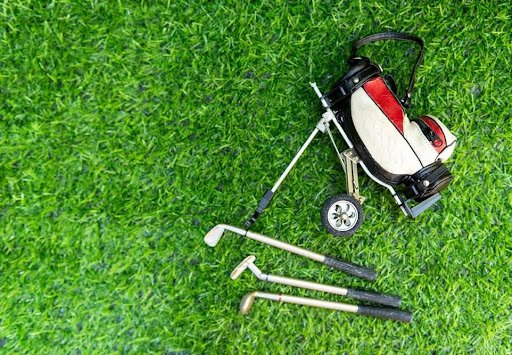Most people may view golf as a low-impact sport, but golfers are never immune to the risks of injury. Golf injuries usually result from improper technique and overexertion, but the wrong or poorly chosen equipment can exacerbate these problems. From your cart to your clubs, every piece of golf equipment should be suited to your skill level and support your movements. In this article, we look at golf injury prevention and discover how the right golf equipment can keep you safe and performing at your best.
Golf carts and bags to reduce strain
Carrying or pulling a heavy golf bag for 18 holes can strain your legs and back. Using a cart reduces the stress on your body and allows you to conserve energy, especially during long or hilly shifts. High-quality golf carts like ATX’s Golf Carts can truly be a game-changer for injury prevention because they allow you to rest between shots and minimize overuse of your muscles and joints. articulation For people with mobility challenges or those recovering from injuries, golf carts also provide a way to stay active without risking further injury.
Likewise, lightweight, ergonomic golf bags with padded straps can distribute weight evenly across your shoulders. These are particularly useful if you are prone to back pain.
Golf gloves for stability and protection
The repetitive swinging motion of golf can lead to blisters, calluses and pain in the wrists, especially if your grip is not steady. Well-fitting golf gloves are an essential piece of equipment that not only improves your grip, but also helps prevent injuries such as tendinitis and carpal tunnel syndrome. Extra padding in the palm and fingers can provide additional comfort and reduce friction, which helps prevent bumps and swelling. Choose gloves that fit well but not too tight – better if they are made of breathable material.
Golf shoes for better grip and traction
Your feet are the foundation of your posture, swing and overall balance when playing golf. Since the sport involves walking long distances and standing for extended periods, the right golf shoes can make a big difference in preventing injuries to your feet, ankles, knees and lower back. Golf trainers with proper arch support can help distribute your weight and absorb impact, reducing pressure on your feet and preventing conditions like metatarsal pain. It is also essential to have shoes with good traction, such as spikes or special soles, to help prevent slipping when the course is wet. For golfers with specific foot problems, such as flat feet or high arches, custom orthotics can be added to golf shoes for additional support or comfort.
Golf club for correct posture
One of the most critical factors in preventing injuries in golf is using clubs suited to your size, strength and swing speed. Bad clubs can force you into awkward postures that put excessive strain on your joints and muscles. Too long and you squat, too short and you overextend. Heavy clubs may offer more power, but they can strain your wrists, elbows and shoulders over time. If you are prone to injury, consider lighter clubs that provide easier control without overexertion.
Likewise, the thickness of your clubs plays a role in preventing wrist and elbow injuries. Grips that are too small can cause over and develop the golfer’s elbow, while those that are too large can limit the movement of the wrist. Opt for grips that feel comfortable in your hand, allow for a natural swing, and suit your playing style.
Stay safe and play hard
Golf is an enjoyable and rewarding sport, but like any physical activity, it carries a risk of injury. The choices you make about your equipment – whether it’s a golf cart, gloves, shoes or clubs – can go a long way in preventing common health problems. Investing in high-quality, appropriate equipment can boost your performance and stay injury-free on the course.
